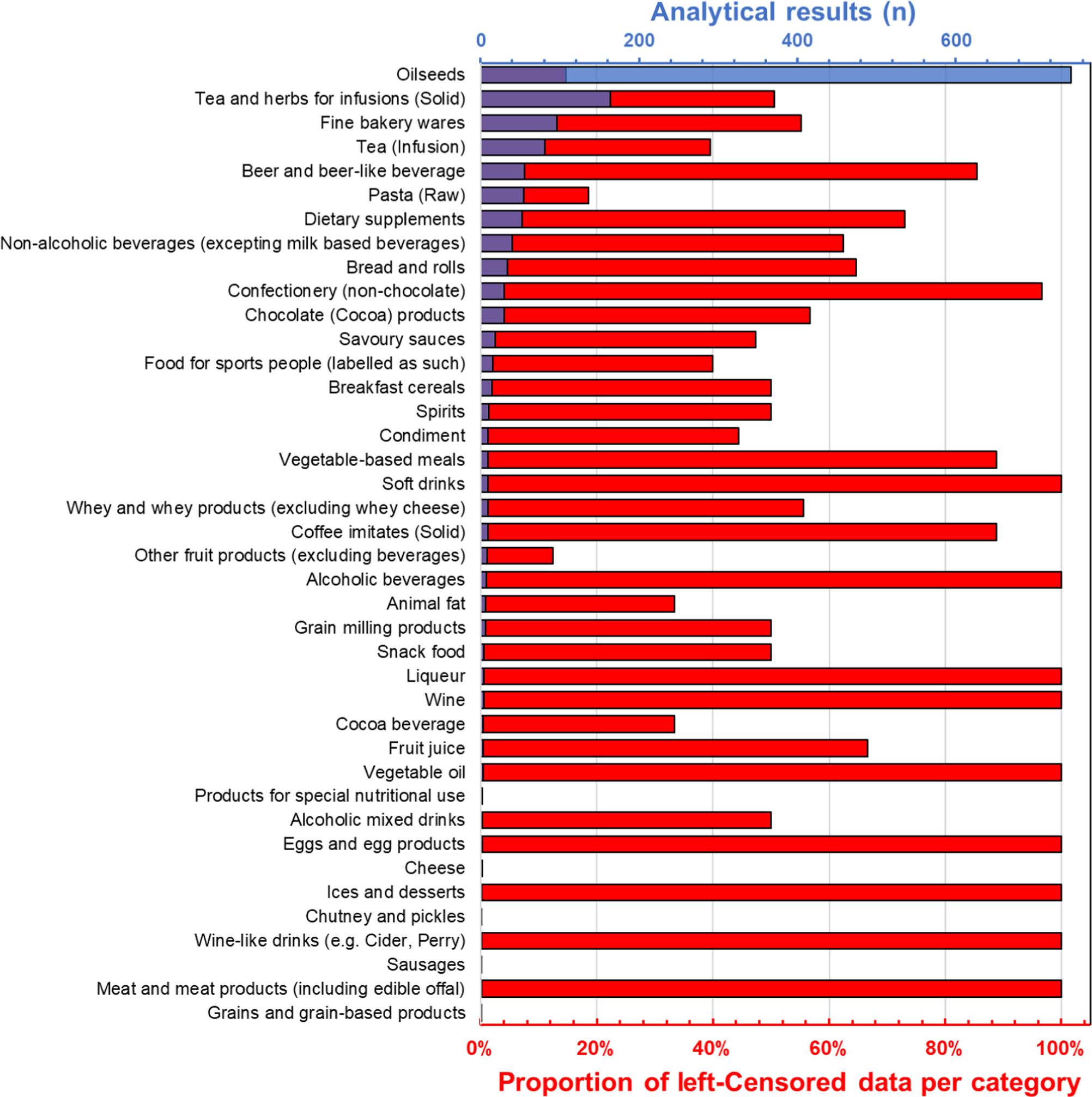Acute human exposure assessment to tetrahydrocannabinol (Δ9‐THC)
European Food Safety Authority (EFSA) Davide Arcella EFSA Journal 07 January 2020 https://doi.org/10.2903/j.efsa.2020.5953
Delta‐9‐tetrahydrocannabinol (Δ9‐THC) is a naturally occurring psychoactive compound derived from the hemp plant Cannabis sativa. In 2015, EFSA established an acute reference dose (ARfD) of 1 μg/kg body weight (bw) for Δ9‐THC and assessed acute dietary exposure from milk and dairy products. This resulted at the most 3% and 13% of the ARfD for adults and toddlers, respectively. Following the European Commission Recommendation 2016/2115 on the monitoring of the presence of Δ9‐THC in food and the issuing of a new mandate, EFSA assessed the acute human exposure to Δ9‐THC. ‘Standard’ food categories were used as proxies for consumption of hemp and hemp‐based products. Twelve independent scenarios based on single food categories were considered and acute exposure was assessed for consumption days only for all age groups excluding infants.
Occurrence data for Total‐Δ9‐THC (588 samples in total) were used for this assessment up to the highest reliable percentile for each food category. The EFSA ARfD of 1 μg/kg bw was exceeded in the adult high consumers of most considered hemp and hemp‐containing products, under the lower‐bound (LB) and upper‐bound (UB) scenario. At the UB, acute exposure in adult high consumers was estimated based on the highest reliable percentile of occurrence, for Hemp seeds (P95, up to 9 μg/kg bw), Hemp oil (P95, up to 21 μg/kg bw), Tea (Infusion) (P95, up to 208 μg/kg bw), Breakfast cereals (P50, up to 1.3 μg/kg bw), Pasta (Raw) (P75, up to 6.4 μg/kg bw), Bread and rolls (P75, up to 1.3 μg/kg bw), Bread and rolls from hemp flour (P90, up to 4.1 μg/kg bw), Cereal bars (P50, up to 0.3 μg/kg bw), Fine bakery wares (P75, up to 5.1 μg/kg bw), Chocolate (Cocoa) products (P75, up to 1.1 μg/kg bw), Energy drinks (P75, up to 0.2 μg/kg bw), Dietary supplements (P75, up to 9.9 μg/kg bw), Beer and beer‐like beverages (P90, up to 41 μg/kg bw). The use of proxies for the consumption of hemp and hemp‐containing products, the limited number of occurrence data and the analytical limitations in the quantification of Δ9‐THC represent the most important sources of uncertainty. Overall, exposure estimates presented in this report are expected to represent an overestimation of acute exposure to Δ9‐THC in the EU.














